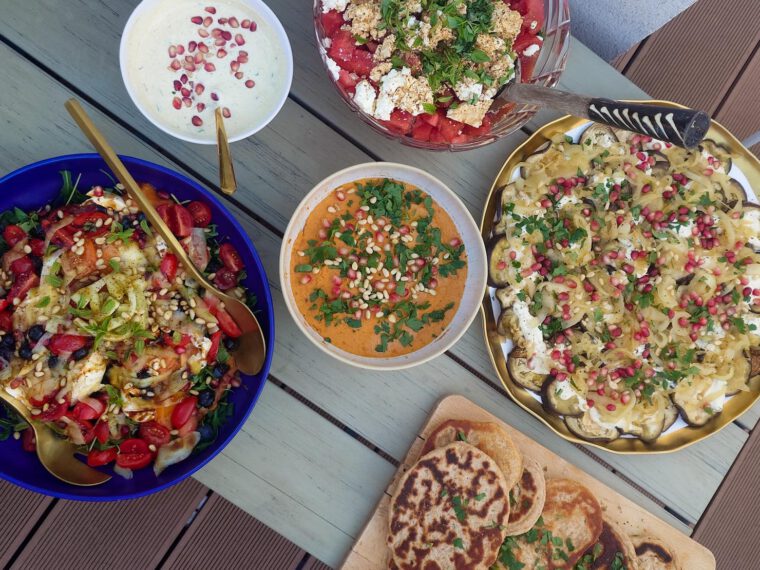
…mit einigem Gebackenem, Sketchnotes von einem Vortrag über Wissenschaftsgrafiken – und wie immer, den besten Links der letzten Woche.
Seit dem letzten Zuckersüß habe ich Pumpkin Spice-Cupcakes (die ich A/B-testen wollte und dann nicht mehr wusste, was was ist – Rezept folgt… irgendwann) und Marmeladen-Schnitten mit Vanille-Frischkäse-Guss (bald im Blog!) gebacken. Und ich habe die Dirndl-„Oliven“, die nun 10 Tage (oder so) in Salzlake lagen, abgewaschen und in Rapsöl eingelegt, sie schmecken super!
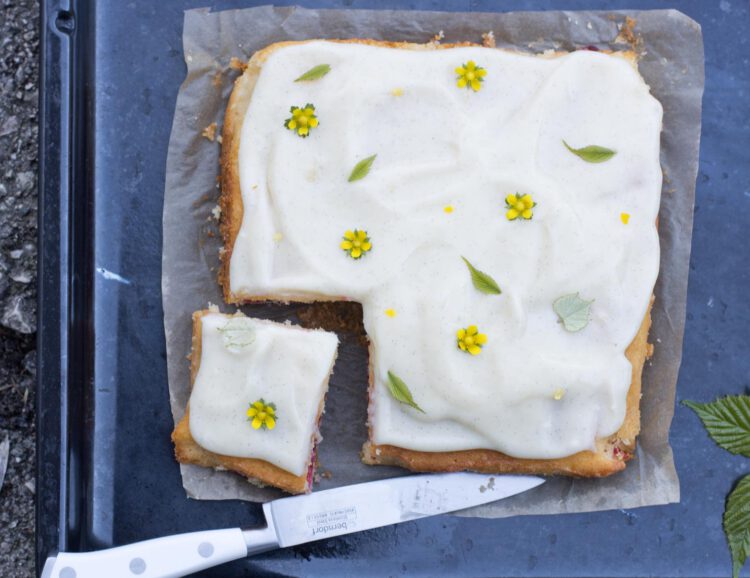

Gegessen
Ramen von meiner Mitbewohnerin, kalte Reisnudeln mit Gemüse und Tahini-Zitronendressing, Kürbis-Ricotta-Lasagne, Kürbis-Pecorino-Pancakes (lose inspiriert von Smitten Kitchen) und Kohlrabi-Radi-Gurkensalat mit Hollerblütenessig. Avocado-Dattel-Erdnuss-Butter-Smoothie (aka 3ssir b avocat) zum Frühstück.
Gesehen
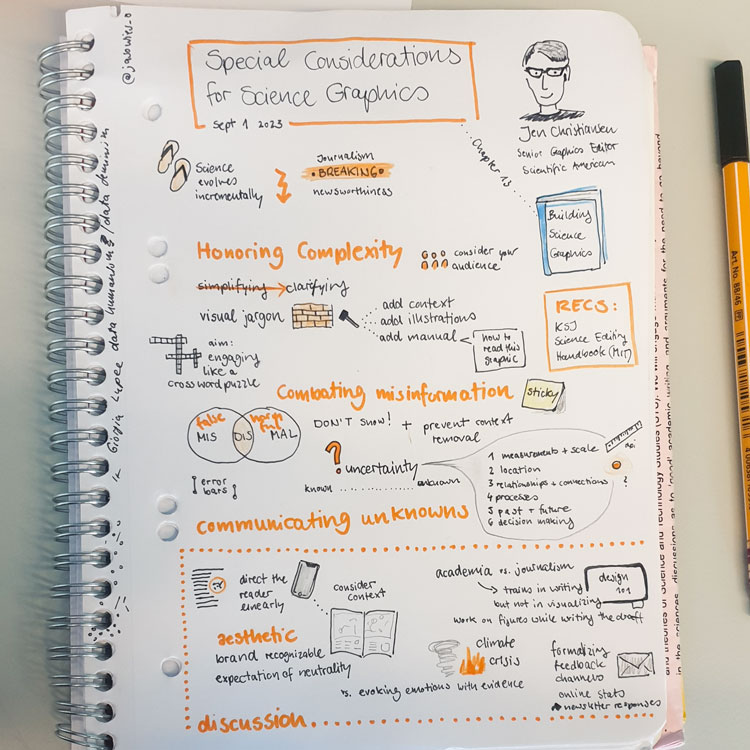
Freitag ist ohnehin mein Uni-Tag (um hoffentlich *bald* meine MA-Arbeit fertigzukriegen), wieso also nicht mal wieder zu einem Uni-Vortrag gehen! Jen Christiansen, Senior Graphics Editor des Scientific American hat vergangene Woche bei der Research Group Visualization and Data Analysis der Universität Wien über Special Considerations for Science Graphics from a journalist’s Point of View gesprochen, ein Auszug aus ihrem Buch Building Science Graphics.
Es ging um den Kontrast zwischen Wissenschaft, die inkrementell Fortschritte macht/ Wissen schafft und Journalismus, der so oft auf Breaking News aus ist. Darum wie man Komplexität ernstnimmt, ohne Betrachter_innen zu überfordern und wie man Misinformation vorbeugen kann, z. B. durch Layout/Grafiken, die man nicht so leicht aus dem Kontext reißen kann. Und dann gings noch darum, wie man „Unknowns“ und Ungewissheiten kommunizieren kann, und wann man sich das vielleicht sogar sparen sollte.
In das empfohlene KSJ Science Editing Handbook (MIT Press) will ich mal einen Blick werfen, außerdem muss ich noch über Data Humanism nach Giorgia Lupi nachlesen. Jen Christiansen hat auch ein Buch über Data Feminism erwähnt, vermutlich ist es dieses hier von Catherine D’Ignazio und Lauren Klein, das im Oktober bei der MIT Press erscheint.
Gestrickt


Von meinem Rumble Raglan gibts jetzt Bilder. Ich habe endlich mal wieder bei meinem Planet A-Klimawandeltuch weitergestrickt (bin erst im Mai), vgl. Daten Stricken in der Klimakrise. Mir sind zehn Knäuerl grüner Schurwolle in die Hände gefallen, mit dem Kaufbeleg von 2. Oktober 1972 (?!). Und ich habe Baumwolle in hot pink gekauft, um mir für eine Party sowas in der Art zu häkeln.
Veröffentlicht
Im Blog: Pasticciotti
Anderswo: Nix (langsam wirds mal wieder Zeit!).
Hier folgen meine liebsten Links der letzten Tage:
Rezepte
Fifteens Recipe – Serious Eats
Das klingt unerträglich picksüß. Aber irgendwie gut?
Far Breton – Effilee
Fühlt sich wie ein Herbstgebäck an.
Texte
Orange Is the New Yolk – Eater.com
Diese US-amerikanischen besonders orangen Eigelbe sind offenbar für Fotos und Film sehr beliebt, mir scheint, als wären sie mir in der zweiten Staffel von The Bear auch untergekommen.
Egg carton marketing, which is at best opaque and at worst a pernicious lie, would have us believe that the hens who imparted these eggs to the bourgeois grocery shopping class are twirling through pastoral fields like Maria in The Sound of Music. The yolk is the purest representation of this dream, a bright orange ball of flavor and “good” fat that dazzles the eye, fills the belly, and soothes the conscience.
I’m a Food Stylist, here’s what you should know. | Countertalk
Holly Cochrane ist Foodstylistin für Filmproduktionen und erzählt aus ihrem Berufsalltag:
What a lot of people seem to misunderstand about food styling, is that you are basically a chef. The word ‘styling’ is misleading – your job is not just to artfully plate and fluff food, but to cook everything to perfection too, so you need to be able to cook first and foremost. For some clients, the job can also involve recipe development, so an understanding of flavours, the alchemy of cooking, and a borderline brave level of creativity is also a big plus.
Type Revival for Film & TV | Alphabettes (via Robin Rendle)
Die Schriftdesignerin von The Marvelous Mrs Maisel erzählt von ihrem Job.
In addition to the challenges of forgery, I specialize in graphic design for period productions, and when you approach period typography, you wind up with several restrictions. Firstly, many typefaces that were used for letterpress or used in typewriters were never digitized and only survive today in their original forms or in their printed materials. Secondly, there are lots of existing digital period typefaces like Futura or Garamond, but they too have issues. We lack (or are logistically unable to use) historical production methods, such as mimeograph, Letraset, offset printing, Linotype, etc., so the kind of roughness you expect of period graphics is lost. We also have legal restrictions on font foundry use, so each production’s clearance team will tell you, for example, “you can only use Adobe fonts on this movie.” This can be restrictive, particularly for period or highly stylized productions where only a small portion of the available fonts are appropriate. And thirdly, there are lots of instances of lettering that were never a typeface in any sense, such as sign painting or handwriting.
Inside Susan Kare’s sketchbooks are the makings of Mac’s graphic interfaces – It’s nice that
Auch schon vintage: Die erste Generation von Mac-Piktogrammen.
As part of the original Mac team, Kare created some of the first digital fonts, the UI for MacPaint and some of the most persistent icons in computing such as the trash can/bin, the save disk and the smiling Mac. Kare added to the UI an element of friendliness and emotion. The icons that she designed were playful and simple enough to be recognisable to users around the world.
Over the Rainbow: How Culture Shapes Color | Atmos
Wie es jetzt *wirklich* ist mit der Farbwahrnehmung, verrät dieser Text noch nicht (ongoing research), aber die Fakten am Rande fand ich erstaunlich:
The concept of a seven-color rainbow dates to Sir Isaac Newton, the seventeenth-century English mathematician most famous for his theory of gravity. He chose seven colors in part because the number seven was auspicious: there were seven musical notes in the major scale, and this had long been thought to be meaningful.
What Are Dreams For? – The New Yorker
Nochmal Neurowissenschaften (REM sleep ist die Schlafphase in der wir träumen):
In a series of papers, Blumberg articulated his theory that the brain uses REM sleep to “learn” the body. You wouldn’t think that the body is something a brain needs to learn, but we aren’t born with maps of our bodies; we can’t be, because our bodies change by the day, and because the body a fetus ends up becoming might differ from the one encoded in its genome. “Infants must learn about the body they have,” Blumberg told me. “Not the body they were supposed to have.”
AI predicts chemicals’ smells from their structures – nature.com
Das erinnert mich dran, dass ich Harold McGee’s Nose Dive endlich lesen will.
The system identified around 250 correlations between specific patterns in a chemical’s structure with a particular smell. The researchers combined these correlations into a principal odour map (POM) that the AI could consult when asked to predict a new molecule’s scent.
We should all be reading more Ursula Le Guin | The Outline
Gefunden über meinen Carrier Bag-Exkurs im Zuckersüß vergangene Woche.
“The Carrier Bag Theory of Fiction,” an essay Le Guin wrote in 1986, disputes the idea that the spear was the earliest human tool, proposing that it was actually the receptacle. Questioning the spear’s phallic, murderous logic, instead Le Guin tells the story of the carrier bag, the sling, the shell, or the gourd. In this empty vessel, early humans could carry more than can be held in the hand and, therefore, gather food for later. Anyone who consistently forgets to bring their tote bag to the supermarket knows how significant this is. And besides, Le Guin writes, the idea that the spear came before the vessel doesn’t even make sense. “Sixty-five to eighty percent of what human beings ate in those regions in Paleolithic, Neolithic, and prehistoric times was gathered; only in the extreme Arctic was meat the staple food.”Not only is the carrier bag theory plausible, it also does meaningful ideological work — shifting the way we look at humanity’s foundations from a narrative of domination to one of gathering, holding, and sharing.
Second-Hand Lifestyles | Spike Art Magazine
Chloë Sevigny vs. Kim Kardashian oder zweierlei Arten von it girls.
She also has character and style and a special something that comes from their conjunction. Chloë has appeared in campaigns for Miu Miu and Calvin Klein. Her special something creates stories for these brands, stories that would once have been told by photographers and stylists and designers, by line and cut and color rather than plotlines imported from an it-girl’s life. This something is for the most part ineffable, synonymous with few words except, perhaps, “it.” The boys and girls in line dangling paperbacks and outmoded cameras and flavorful vape pens know a few more. Chloë is cool. She has “aura.”
Hanging in the Balance Sheet | Kyle Paoletta
Über den Trend IP, also irgendwelche Marken, zu Filmprotagonisten zu machen.
Enter: the pitch meeting, the nascent genre’s mandatory climax. However integral to each product’s genealogy, the outcome of the pitch is a foregone conclusion. There are no narrative stakes, and without those the emotional stakes wither—the films become as lifeless as the products they’re about, particularly once the conversation inevitably turns to market share. Why does Nike need Jordan? To catch up with Adidas and Converse. Why does Frito-Lay need a spicy Cheeto? To edge out Eagle Brands. The particular worries each idea man brought with them into their pitch meeting is beside the point. Eventually, everybody in the room ended up stinking rich.
Audio/Video
The Wubi Effect – RadioLab
Die Geschichte der digitalen Eingabe chinesischer Schrift.
Vuli Ndlela – Brenda Fassie (via Friendly Neighborhood Playlist)
Ohne zu wissen, worum es in diesem südafrikanischen Song geht, finde ich den Vibe cool, irgendwo zwischen melancholisch bittersüß und total hyper.
Sonst So
The Viral Knitting Project – Kristy Robertson
Ich weiß nicht, wie ich da gelandet bin (die Seite gibts nur noch im Internet Archive!) aber dieses Strick-Kunst-Projekt klingt spannend:
The viral knitting project grew out of a desire to bring together the viral communication possibilities of the internet with the anti-war movement and Revolutionary Knitting Circles. The collaboration between art historians, communications scholars, activists and artists resulted in a project that took the binary code of the Code Red Virus, a virulent computer virus that exploits a bug in the indexing system of Microsoft Windows, and turned it into a knitting pattern. The binary code, made up of zeros and ones, was easily translated into the P(purl) and K(knit) stitches of knitting patterns. Once knitted, the virus became a scarf, something that was comforting, giftable, but intrinsically dangerous – a latent virus that could be easily transported over borders, into restricted areas, across threatened territories. In turn, because it was a virus, we hoped that the pattern/idea would spread, that people would pick up on the viral pattern and begin to knit it, or would take the idea and translate it to other codes.
Friendly Neighborhood Playlist – Maxwell Neely-Cohen
Das ist eine nette Idee:
frustrated with how bad the algorithmic- and revenue-driven playlist culture is on Spotify, I decided to create a QR code linked to a playlist on a new Spotify account, and posted four signs on the street inviting anyone to contribute to it. It now has almost 13 hours of music, all provided by random passers-by. I wouldn’t really call this project a success, or really even a project, but an attempt. I don’t really like Spotify. It treats artists terribly, and worse, doesn’t see that as a problem. I spent a lot of time wondering if I could interact with the platform differently, use it in a way that might feel good. I’m not sure I succeeded. But here’s a link to the playlist—
Stitch Maps
Eine neue Art, Strickschriften zu visualisieren.
Glance Back
Ein lustiges Kunstprojekt-Browser-Add-on, konzeptuell ein bisschen wie BeReal.
Backkatalog
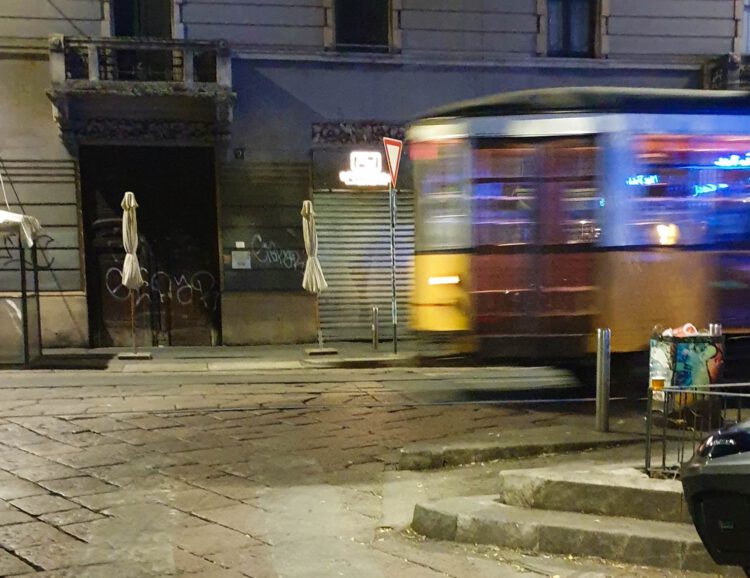


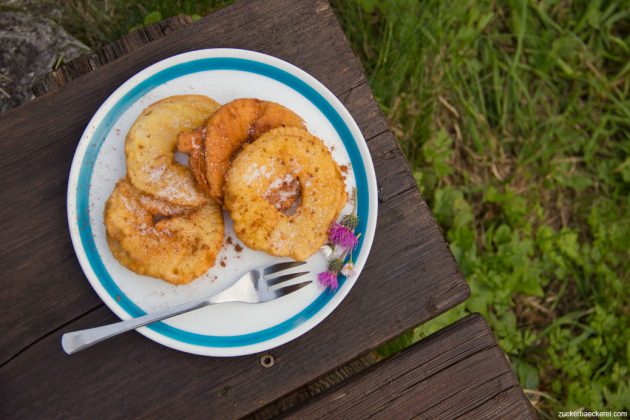

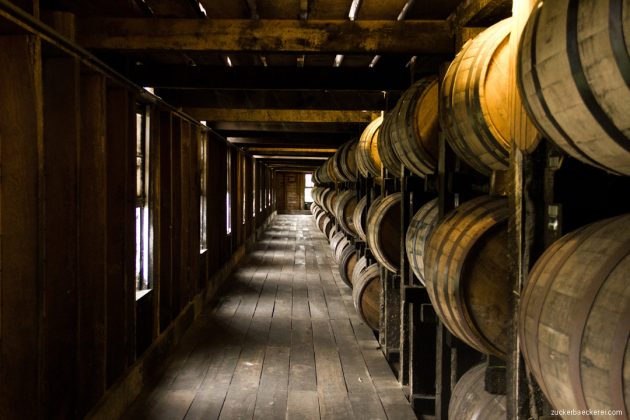
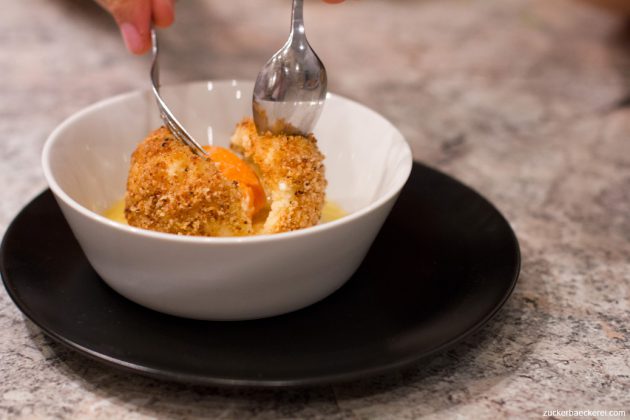
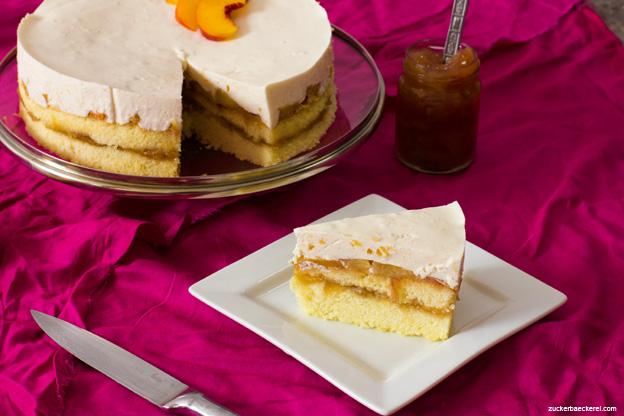

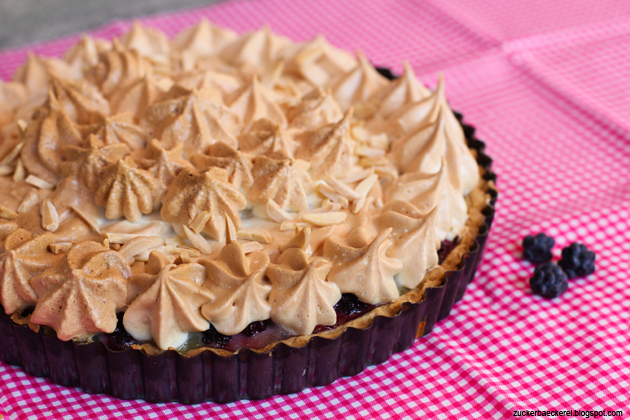



- 2022: Eine Reise nach Milano oder eher: ein Nachmittag bei der Triennale
- 2021: Zwetschgen-Ingwer-Mohn-Kuchen
- 2020: Feigen-Sahne-Eis mit Karamellisierten Oliven
- 2019: Apfelradl – Frittierte Apfelringe
- 2018: Heidelbeer-Apfel-Birnen-Pie
- 2017: Eine Reise in die USA, Pt. 2: KY
- 2016: Marillenknödel
- 2015: Pfirsichtorte
- 2014: Neues aus Marokko 2
- 2013: Apfel-Brombeer-Tarte
- 2012: Vanillemarshmallows mit Zuckerstreuseln
- 2011: Brownies mit Pecantopping
- 2010: Chocolate chocolate cupcakes

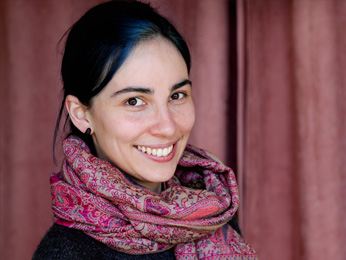 Hi, ich bin Jana. Seit 2009 veröffentliche ich hier wöchentlich Rezepte, Reiseberichte, Restaurantempfehlungen (meistens in Wien), Linktipps und alles, was ich sonst noch spannend finde. Ich arbeite als Redakteurin bei futurezone.at, als freie Audio-/Kulinarikjournalistin und Sketchnoterin. Lies mehr über mich und die Zuckerbäckerei auf der
Hi, ich bin Jana. Seit 2009 veröffentliche ich hier wöchentlich Rezepte, Reiseberichte, Restaurantempfehlungen (meistens in Wien), Linktipps und alles, was ich sonst noch spannend finde. Ich arbeite als Redakteurin bei futurezone.at, als freie Audio-/Kulinarikjournalistin und Sketchnoterin. Lies mehr über mich und die Zuckerbäckerei auf der 

 Über den Tellerrand
Über den Tellerrand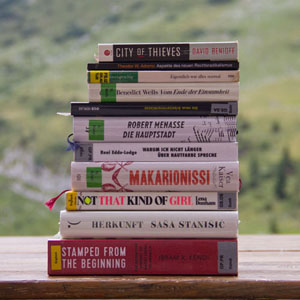 Bücher
Bücher Zuckersüß
Zuckersüß
